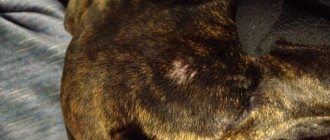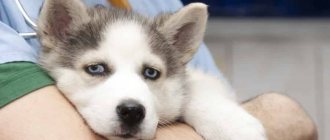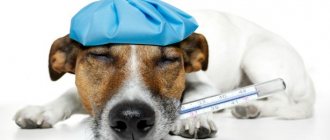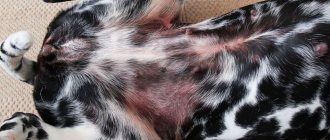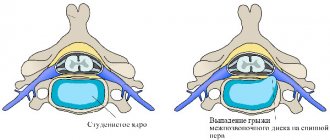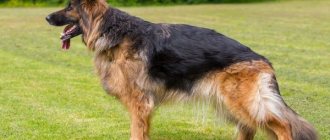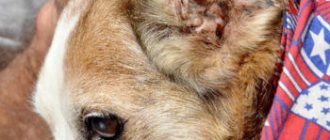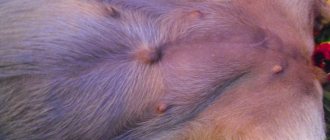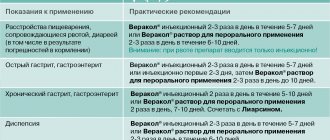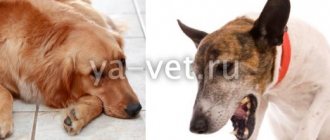In different breeds and dogs living in different conditions, the shedding process occurs differently. Dogs living in nature shed their fur “on a schedule”: before winter, in order to prepare for frost and build up a warm undercoat and long hair, and before summer, to replace the warm coat with thinner hair.
For dogs that live at home, where they are not afraid of any frost or heat, shedding can drag on for the entire season. This is why a dog can shed even in winter.
There are several types of shedding:
- seasonal - the process of shedding hair occurs twice a year: in the spring shorter hair grows, and in the fall the hair becomes thicker and longer;
- age-related - usually goes away at one month or six months of age, often with a change in fur, the color also changes;
- permanent - usually occurs in dogs kept at home. Due to the stable temperature of the room, the biological rhythms of the animal are disrupted, and the dog sheds constantly.
What to do if your dog sheds a lot?
To make life easier for a dog that sheds, you need to brush it every day with a special brush. This will remove lost hair and new hair will begin to grow faster. In addition, brushing will have a beneficial effect on the blood circulation of the skin, which will strengthen the fresh coat. The more often you groom your dog, the less hair will remain on the carpets and sofa.
If your dog's hair is not falling out for natural reasons, you should definitely reconsider its diet. Perhaps she lacks some vitamins and minerals, which is why the hair follicles have weakened and the hair has begun to fall out.
A bad sign is when a dog’s fur sheds in places, and ulcers or sores form in these places. In this case, you need to contact a veterinarian, because these may be symptoms of various diseases.
How long does it take for dogs to shed?
Seasonal shedding with proper care for the dog lasts 1-2 weeks. Shedding can be permanent all year round, but you can reduce its intensity. Brush your pet more often and make sure that its diet always contains all the necessary vitamins and substances that affect the quality of its coat.
Are there dogs that don't shed?
There are no dogs that do not shed at all, but some breeds shed much less than others, for example:
All dogs, regardless of breed, shed. But there are breeds that do not shed profusely.
These breeds include Irish Water Spaniel, Spanish Water Dog, Giant Schnauzer, Black Russian Terrier, Bichon Frize, Chinese Crested, Yorkshire Terrier, Mexican Hairless, Poodle, Shih Tzu, Miniature Schnauzer, Dandie Dinmont Terrier, Bedlington Terrier, Tibetan Terrier , Maltese, Havanese Bichon, Coton de Tulear.
Causes of shedding in dogs
Seasonal shedding in dogs is a natural process, but hair loss can also occur for other reasons.
One of the reasons is dehydration, i.e. lack of access to water and lack of water in food leads to dry skin, as a result of which there is excessive shedding, and in some cases dehydration leads to the development of diseases.
As a result of poor nutrition or illness, the body does not receive the nutrients necessary for healthy coat and skin, the condition of the skin and coat worsens, and hair begins to fall out.
It is known that bitches begin to shed before going into heat. Therefore, this factor should also be taken into account if off-season molting suddenly begins. Age-related shedding and shedding in bitches who have stopped nursing puppies are considered normal.
Hair loss can be triggered by stress, for example, during pregnancy, moving, or surgery.
Excessive shedding can occur in pets living in an apartment where the air temperature is high. Due to the heat, hair may begin to fall out regardless of the change of season. The optimal maximum indoor air temperature should not exceed +26 degrees.
Why does my terrier's hair fall out?
A dog's coat is divided into guard hair and a soft undercoat underneath, which together reliably protect the pet from various weather conditions. In addition to the undercoat and guard hair, toy terriers have vibrissae - whiskers and eyebrows that help the animal navigate in space.
If the pet begins to actively lose hair, the owner, first of all, needs to contact a veterinarian to determine the reason why the terrier’s hair is falling out.
The reasons for hair loss in a toy terrier can be very diverse:
- Seasonal shedding. Normally, toy terriers shed twice – in spring and autumn. However, often animals kept in an apartment begin to shed year-round - the room is always maintained at a warm temperature, and pets cease to distinguish what time of year it is outside;
- Wrong diet. Often a terrier's hair falls out due to unbalanced feeding - a pet can go bald both due to a deficiency of vitamins and from their excess. In this case, it is necessary to immediately establish proper feeding of the toy terrier - the animal must receive a sufficient amount of animal protein, vitamins and minerals; you can learn more about feeding your pet here;
- Allergic reaction. Anything can cause a malfunction of the immune system - food, cosmetics, medicines, plants, a collar and low-quality toys. In this case, you can act by elimination - first of all, you need to give up new cosmetics, toys or food recently introduced into the diet. If there have been no innovations, it is worth excluding strong allergens from natural feeding - red vegetables and fruits, chicken meat and eggs. It is also worth contacting a veterinarian who will help identify the allergen and prescribe antihistamines. In case of allergies, in addition to hair loss, the animal will be bothered by itching and rashes on the skin, in the form of red pimples;
- Hormonal imbalance in the body of a toy terrier. Failures can be caused by medications, dysfunction of the thyroid gland or adrenal glands. To identify hormonal imbalance, you need to take a biochemical blood test, as well as blood for hormones, a biopsy and a skin scraping;
- Parasites (worms and fleas). At the same time, hair loss can also be caused by uncontrolled use of antiparasitic drugs, since these drugs contain poison, even despite small doses, they should not be given to your pet just like that;
- Improper care of your pet's fur. Excessive bathing of a Toy Terrier can cause irritation, dandruff and itching, causing the pet to scratch the skin excessively and hair to begin to fall out. Therefore, when purchasing a puppy, you should carefully consider the advice and recommendations of the breeder; details of caring for the puppy can be found here;
- Severe stress. That terrier, experiencing separation from its owner, sitting in the apartment all day or for other reasons, may experience stress, due to which the terrier’s hair begins to fall out;
- Skin infections. Ringworm, demadecosis, microsporia and other diseases cause itching and hair loss;
- Childbirth. A toy terrier bitch may begin to shed after giving birth.
We recommend reading: Can Fleas Spread from Dogs to People?
When does shedding begin in dogs?
The very first coat changes by 1.5 months, and in some breeds the color of the coat also changes, becoming darker or, conversely, lighter.
The first age-related shedding in dogs begins no earlier than 6 months of age, during which the downy coat changes to a harder and denser one. In some pets, the fur takes several years to develop and becomes characteristic of adult animals only after several molts.
However, in some cases, the first age-related shedding in dogs can begin at 3.5-4 months, when the guard hair begins to grow. The process of hair change can last up to a year, and in some breeds up to 2 years.
Russian Toy Terrier and Chihuahua
Girls who have a Russian Toy Terrier or Chihuahua. There is a lot of wool at home. They say they shed sooooo much. I want to buy one for myself, but the presence of wool at home scares me, because... the child is small.
Girls who have a Russian Toy Terrier or Chihuahua. There is a lot of wool at home. They say they shed sooooo much. I want to buy one for myself, but the presence of wool at home scares me, because... the child is small.
01 Aug 2021 veterinar77 167
Share this post
- Related Posts
- If Your Cat Has Severe Constipation, It’s Better to Give Vaseline Oil or an Enema If You’re Constipated, Give an Enema
- The Cat Yells When He Goes To The Toilet For Big Time
- How to Treat a Kitten's Eyes If They Fester?
- The cat is vomiting and doesn't eat anything.
Shedding time in dogs
Some breeds have a long and heavy shedding period, while other dogs shed all year round, shedding small amounts of hair daily. Typically, pets shed twice a year:
- in the fall
, usually in September, the light summer coat is shed and a thick, warm undercoat is built up, the pet visually increases in volume, becomes softer and fluffier; - at the end of spring
, usually in May, the undercoat falls out. Spring shedding in dogs lasts less time than autumn shedding.
The timing of shedding in dogs varies, with seasonal shedding lasting about 1-3 weeks. For pets living in an apartment, the timing of shedding may change, and instead of a seasonal change, hair loss occurs all year round due to constant air temperature. In heated and artificially lit houses, the animal’s brain does not receive a signal that a coat change is required; the pets’ bodies are not exposed to natural temperatures, especially if the animals spend most of their time in the apartment and walk very little. The body does not notice the change of seasons and an abundant period of molting does not occur. As a result, shedding occurs on a constant basis every day in small quantities.
Toy terrier puppies: charming creatures without any special pretensions (photo)
The history of the emergence of such a breed as the Toy Terrier goes back to old England, where it was created and formed for the purpose of exterminating small burrowing pests such as mice and rats. These rodents were the main cause of epidemics, as they served as carriers of various infections.
But over time, when people learned to fight diseases on their own, the help of little hunters ceased to be necessary. It seemed that the breed was doomed to extinction, but fashion gave it a second life.
English toys appeared much earlier than Russian ones. If the history of English takes its origins from the 17th century, then the latter were introduced only from the middle of the past. Toy terriers very quickly won the hearts of people, especially the fair half of the population and children.
How to choose the right puppy
You should buy a puppy no earlier than 8 weeks, and preferably no later. The reason is simple: after 8–10 weeks, the baby will have already formed certain habits, which will not be so easy to change.
It is not recommended to take it before eight weeks, since toy terrier puppies (photo below) are still dependent on their mother and their milk teeth may not yet erupt. By the time of purchase, the baby should already have a brand, and if he is older than two months, he should also have a vaccination.
When choosing a puppy, you need to clearly decide for what purpose it is being purchased. Is the goal to attend exhibitions with him, or is there simply a desire to make a little funny friend? This leads to two completely different approaches. In the first approach, it is important to start by choosing a serious, responsible breeder from whom you can confidently take an animal of factory or show condition. In the second case, you can pay less attention
We recommend reading: How to Prepare for Grooming a Cat
Source
RAISING A PUPPY
The main product consumed when a puppy is torn from a bitch is raw, lean, finely chopped and scalded meat (preferably beef). A serving for a one and a half month old puppy is a little more than a teaspoon. You should also leave some water in the bowl and add a drop of sunflower oil (to ease stool).
Gradually, new products need to be added to the puppy’s menu: buckwheat, rice, rolled oats (cooked in water - they are mixed with meat) and chicken. You can give milk porridge.
Each time a new product is added, it is necessary to monitor the reaction of the puppy’s body for diarrhea or discomfort.
Starting from 2 months of age, the puppy needs to include cottage cheese in its diet. It is advisable to make it yourself - in a water bath from one part milk and one part kefir. Also, twice a week you need to give a quarter of a well-cooked yolk (do not give white), kefir. Boiled fish (always give only boiled fish) is included in the puppy’s diet only after 2.5 months. From 3 months, you can start giving your puppy boiled, well-chopped liver and mixed with cereals, a little cheese, and also expand the menu with fruits and vegetables to suit the dog’s taste. (As a rule, the dog eats raw potatoes, apples, cucumbers, and berries well). You should avoid oranges, as they can cause allergies, and carefully (from 4 months) give cabbage - it causes swelling. Avoid carrots as they affect growth too much.
From 6 months to a year, the number of feedings is reduced to 2 times a day, and after a year the dog can generally be fed once a day.
Remember that all food given to a puppy (and an adult dog too) should be low-fat, without sugar and spices. Dry food is completely optional for raising a puppy. We recommend feeding your dog natural food. However, if you decide to switch to dry food, then give the dog a trace
Source
How to get rid of shedding
It is impossible to completely stop the process of hair loss, but regular care during seasonal shedding in dogs will help stop the uncontrolled spread of hair around the house.
An effective hair removal tool is the furminator, the use of which can remove most dead hair in just one session, although the session can last up to an hour or more, depending on the size of the animal and the thickness of the undercoat.
To remove undercoat, you can use brushes, slicker brushes, rubber mittens, and other tools designed for this purpose, but it is not recommended to cut your pets' hair. After cutting, the undercoat will grow even thicker.
To speed up shedding, it is effective to wash your pet in warm water with protein shampoo or shampoo for shedding dogs, then wrap your pet in a warm blanket for 1-2 hours. It is important to monitor the animal's condition during this time, otherwise there is a risk of overheating. This method allows you to speed up shedding, which will take several days, but will be accompanied by heavy hair loss. However, washing the animal is often not recommended.
To reduce shedding in a dog, you need to feed your pet properly. A balanced diet is important, the basis of which should be meat, regardless of the type of feeding. Dry food and a natural diet should contain high-quality products rich in nutrients (vitamins, Omega-3 and Omega-6 fatty acids, antioxidants), which are necessary to maintain the health of the coat and skin, and the body as a whole. With natural feeding, it is useful to give the animal vitamins, but if the pet eats dry high-quality food, there is no need for additional vitamins.
The animal should have free access to water; it is recommended to include wet foods in the diet, such as low-fat kefir and yogurt. Wet commercial food contains up to 78% moisture, and dry food contains only 10%, so it is recommended to feed your pet not only dry, but also wet food.
To prevent fur from spreading around the house, dog owners wear Lycra pet suits. Lycra clothing is lightweight, ventilated and comfortable.
In the article I will look at the reasons why a dog begins to shed heavily, what to do, as well as ways to prevent it. I'll tell you how much shedding happens. I will list options for eliminating unpleasant odor from a dog, and also tell you how to properly care for the animal, whether it needs to be washed, how to rid the animal of shedding and remove dog fluff.
Animal fur is short-lived.
In winter, the animal needs a warm coat, which is not necessary in summer, this is provided by nature. Due to the fact that one coat is replaced by another, the four-legged friend sheds, getting rid of excess hair and fluff in the summer.
A pet is in almost the same temperature conditions all year round. Because of this, the dog sheds regardless of the time of year. Wool constantly flies all over the apartment and can stink.
Wool has one property - it undergoes renewal 2 times a year.
In addition to seasonal shedding: in autumn and spring, pets can also experience out-of-season molts.
The frequency of hair loss can be influenced by your dog's health problems. If your pet is shedding very heavily, you should make an appointment with a specialist.
But we must not forget that you can help your four-legged friend at home.
Allergy
Allergies often cause dry crusts to appear all over the animal’s body, including the tips of the ears. With this phenomenon, the pet constantly itches and bites itself until it bleeds, and it begins to secrete large amounts of tear fluid and wax secretion from the ears. General swelling is also possible. In severe cases, signs of allergy include drooling and loss of coordination. For emergency help at home, you can use suprastin. The dosage is calculated based on the weight of the animal.
Ways to Prevent Shedding in Dogs
Shedding is a natural process and it is impossible to completely get rid of it.
Combing
The simplest and most effective way to get rid of excess hair is to regularly brush your pet. This is best done with a special brush or furminator. Combing is also necessary to prevent the formation of tangles.
The main method for shedding is to comb the fur daily with a special comb.
For breeds with not very large undercoat, in addition to a brush, you can use special gloves that will get rid of excess hair and remove dead hairs.
You should not shave your dog to prevent shedding, since in the summer the coat protects the pet from exposure to direct sunlight and overheating.
Worming
Worms weaken the pet's immunity and destroy its body from the inside, so the pet's skin becomes duller and thinner, and hair falls out. An important way to prevent hair loss in your pet is deworming. This event should be carried out depending on the condition and well-being of the dog.
Veterinarians recommend treating for worms every 3 months as a preventative measure.
Taking vitamins
All pet owners need to know that with severe hair loss, the pet’s body often lacks B vitamins and minerals, since their content in food is very small. To solve this problem, you should introduce special vitamins into your four-legged pet’s diet.
Only a veterinarian can help you decide on the choice of supplement, so if you have problems with your fur, you should immediately contact him for help.
In veterinary pharmacies you can purchase special preparations that improve coat quality.
Proper care
Proper animal care plays a very important role and directly reflects the appearance and condition of the animal's coat. To prevent your four-legged friend from shedding, you need to monitor his health and well-being. The animal should be fed exclusively with natural products that do not contain allergens.
There is no need to overuse dry food, as this negatively affects the health of the pet.
To ensure shine, silkiness and smoothness of the coat, you should bathe the animal regularly and do not forget that care products must be of high quality and contain only natural ingredients.
Why does my terrier's hair begin to fall out?
For the toy terrier, the coat plays an important role, performing protective functions. If the fur begins to lose color and fall out, this is a reason to contact a specialist at a veterinary clinic, who will:
- Prescribe the necessary tests to identify the cause of the pathology (infectious diseases, unhealthy diet, parasite infection, etc.);
- Prescribe effective treatment;
- Recommend preventive measures (adjust a feeding diet, take vitamins, provide proper care to your pet.
Wool for any breed of dog, including the terrier, is not only decoration, but also reliable protection from cold, heat and moisture, as well as an excellent detector of the owner’s relationship with the pet. If the pet's coat is shiny, smooth and pleasant to the touch, this indicates good care and good health; dull, falling out coat of a toy terrier is both a sign of improper care and a symptom of the development of various diseases. Regardless of the cause, a balding animal requires treatment.
Causes of severe hair loss in dogs
Possible causes of excessive shedding in a pet include the following:
- the presence of fleas and/or ticks on the body;
- various fungal or bacterial infections;
- allergy in an animal;
- side effects of medications;
- period of pregnancy and lactation;
- diseases of the kidneys, liver, thyroid gland and adrenal glands;
- sunburn, etc.
The reason for severe shedding in a dog can be the person himself if he bathes his pet too often.
During the period of shedding, due to internal imbalance and various diseases, the animal may begin to smell like a dog.
Also, the appearance of odor can be caused by improper or insufficient care of the animal.
Probable diseases
Sores on the back and neck of dogs, itchy areas, loss of tufts of hair are a sign of the development of:
Other negative signs are added to itching and hair loss:
- the dog bites into the skin, the bite marks fester, turn red, and an inflammatory process develops;
- against the background of fungal infections, peeling, blisters, rashes, and weeping areas appear;
- when scratching, infection penetrates into the wounds and suppuration appears;
- the dog sleeps poorly, often itches, and is restless;
- the fur falls out in small and large clumps; white and red spots appear on the body;
- Dried blood forms in the wounds, the dog tears off the scabs, and the inflammation intensifies.
The following symptoms may also appear:
Basic Rules:
Important!
Therapy depends on the type of pathology. It is important to identify and eliminate negative factors that provoke hair loss, the appearance of sores on the dog’s back, skin itching, wounds, peeling, and redness.
Additional rules of therapy:
- Be sure to thoroughly clean and wash the bedding; if fungal infections develop, it is advisable to replace the bed on which the pet is resting. It is important to treat the floor, furniture, and all areas that the pet could “visit” with fungicide. Only thorough disinfection reduces the risk of relapse;
- Antihistamines are used to treat allergies in dogs. Suprastin, Tavegil, Diazolin. The veterinary pharmacy sells Allervet solution to eliminate allergic reactions in animals. The duration of the course and dosage are determined by the veterinarian, taking into account the age and weight of the four-legged friend;
- with the development of the “greasy tail” disease (increased secretion of fatty secretions from glands located near an important element), it is important to understand the reason for the increased secretion of thick fluid. Until the test results are ready, during the examination, treatment consists of treating the problem area with antiseborrheic shampoos and disinfectants to reduce the risk of inflammation in a dense, oily environment;
- All folds of skin in breeds such as chow chow, French bulldog, pug must be treated with disinfectant and drying solutions if sweat and sebaceous gland secretions accumulate in the recesses. In case of severe tissue inflammation, antibacterial therapy is prescribed;
- The best option is to cut the animal’s hair short before starting to eliminate dermatological problems to make it easier to care for wounds and sores. It will be easier for the veterinarian to treat the dog’s affected skin areas on the back and other areas. Against the background of fungal infections, it is useful to give your pet a medicinal bath as prescribed by a veterinarian. With this approach to treating the skin, the fungicide dissolved in water penetrates all areas of the pet’s body.
How to get rid of dog smell in an apartment
In order to get rid of an unpleasant odor, just follow these steps:
- wash the animal’s paws after each walk, and also bathe the animal approximately once a month (more often in summer);
- Clean your pet's ears regularly;
- carry out hygienic teeth cleaning;
- Make sure that the dog’s diet is balanced and that the diet is followed.
Regularly clean carpets, sofas and other textile surfaces from dog hair residues.
Human hygiene products are not suitable for caring for dogs, as they have different acidity.
You should only bathe your pet with dog shampoo.
Every owner should carefully monitor the well-being of their beloved pet and pay attention to its appearance. To ensure that your four-legged friend's fur always remains silky and he does not shed for no reason, you should properly care for him and feed him properly, and also regularly visit a veterinarian.
05/07/2017 by Evgeniy
There are a number of artificially bred breeds that are not subject to seasonal shedding. These dogs were specially selected by selective breeding and bred for people who are allergic to animal fur, but who dream of having a pet. These breeds include the Maltese, Tibetan terrier, Yorkshire terriers, poodles, and Irish spaniel. But when purchasing a pet of a non-shedding breed, you should know that this in no way relieves the owner of the problems of caring for the puppy’s coat. The fact is that if in ordinary dogs the fur is renewed on its own and requires intensive combing only at the moment of shedding, then in non-shedding breeds (especially long-haired ones) the fur begins to curl and become tangled. Therefore, such dogs require regular brushing and trimming.
Excessive hair loss: causes
First, you need to figure out what heavy shedding in a dog means. Hair loss in winter can be called abnormal, especially in December and autumn. It is not at all difficult to check whether excessive shedding is taking place - by wetting your hand and running it along the withers. More than 10 hairs (not fluff) are considered abnormal.
Very intense hair loss over three weeks also falls under the category of deviations.
Dogs living in apartments, especially rare breeds, often suffer from a number of diseases, which primarily affect the condition of their coat.
